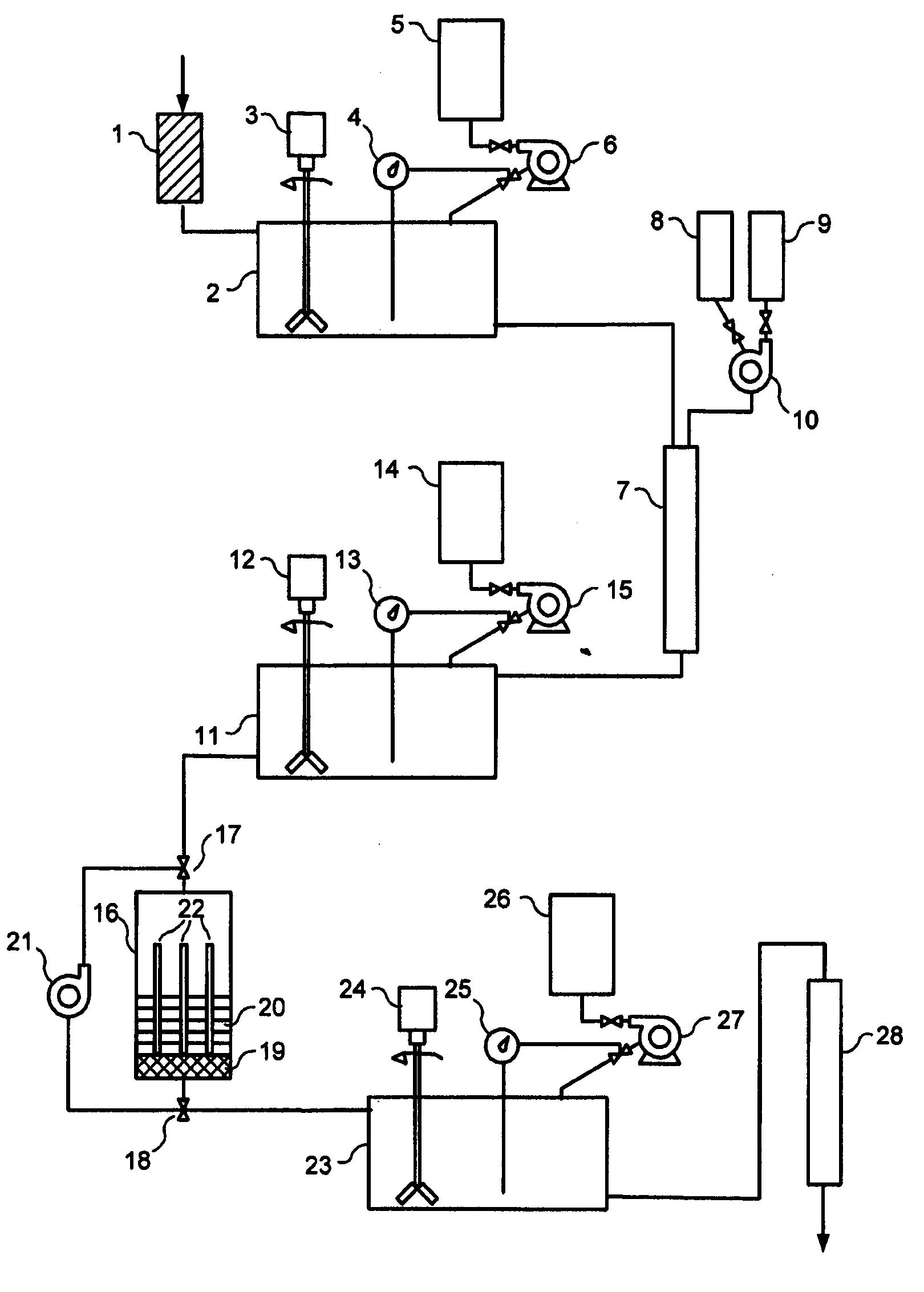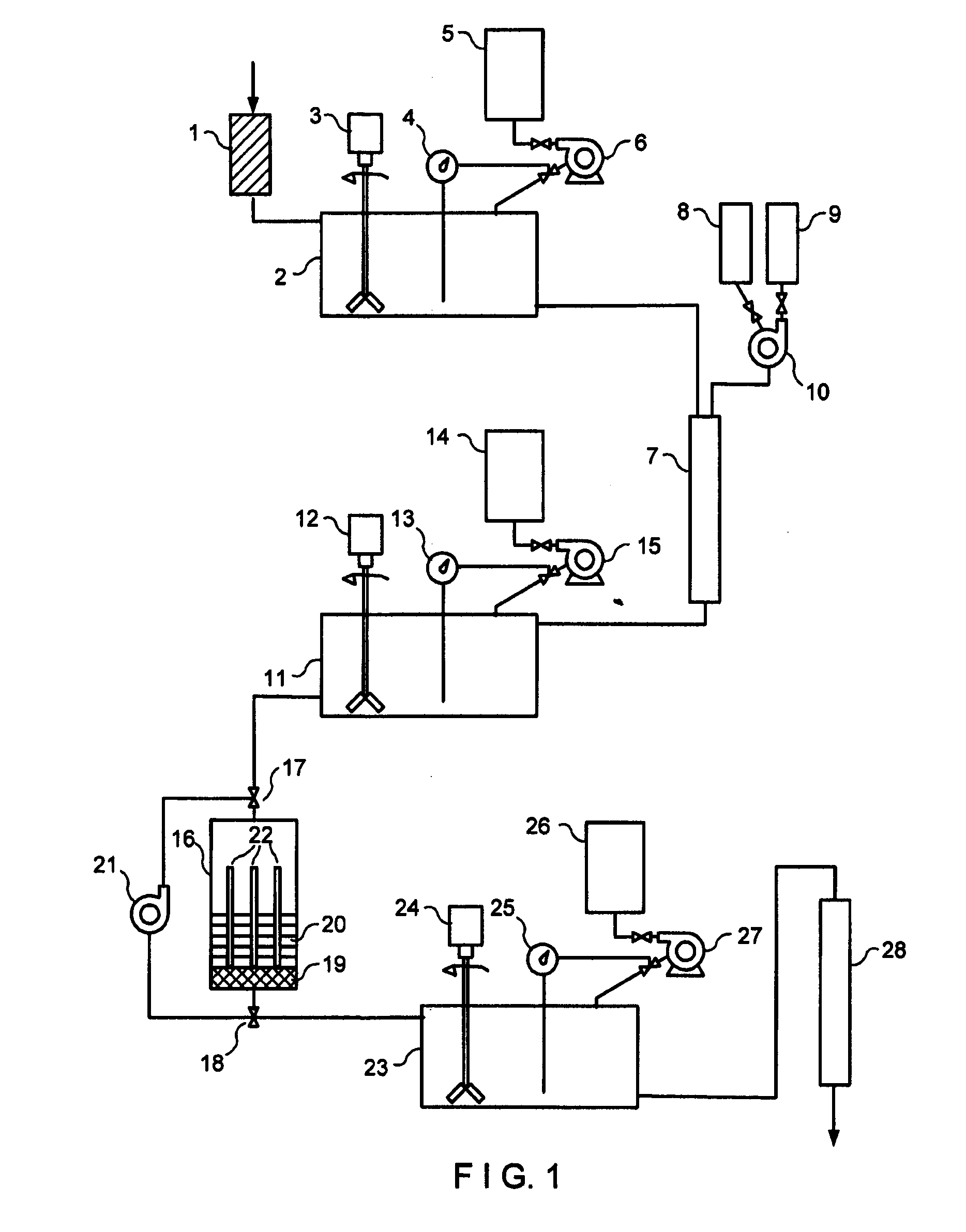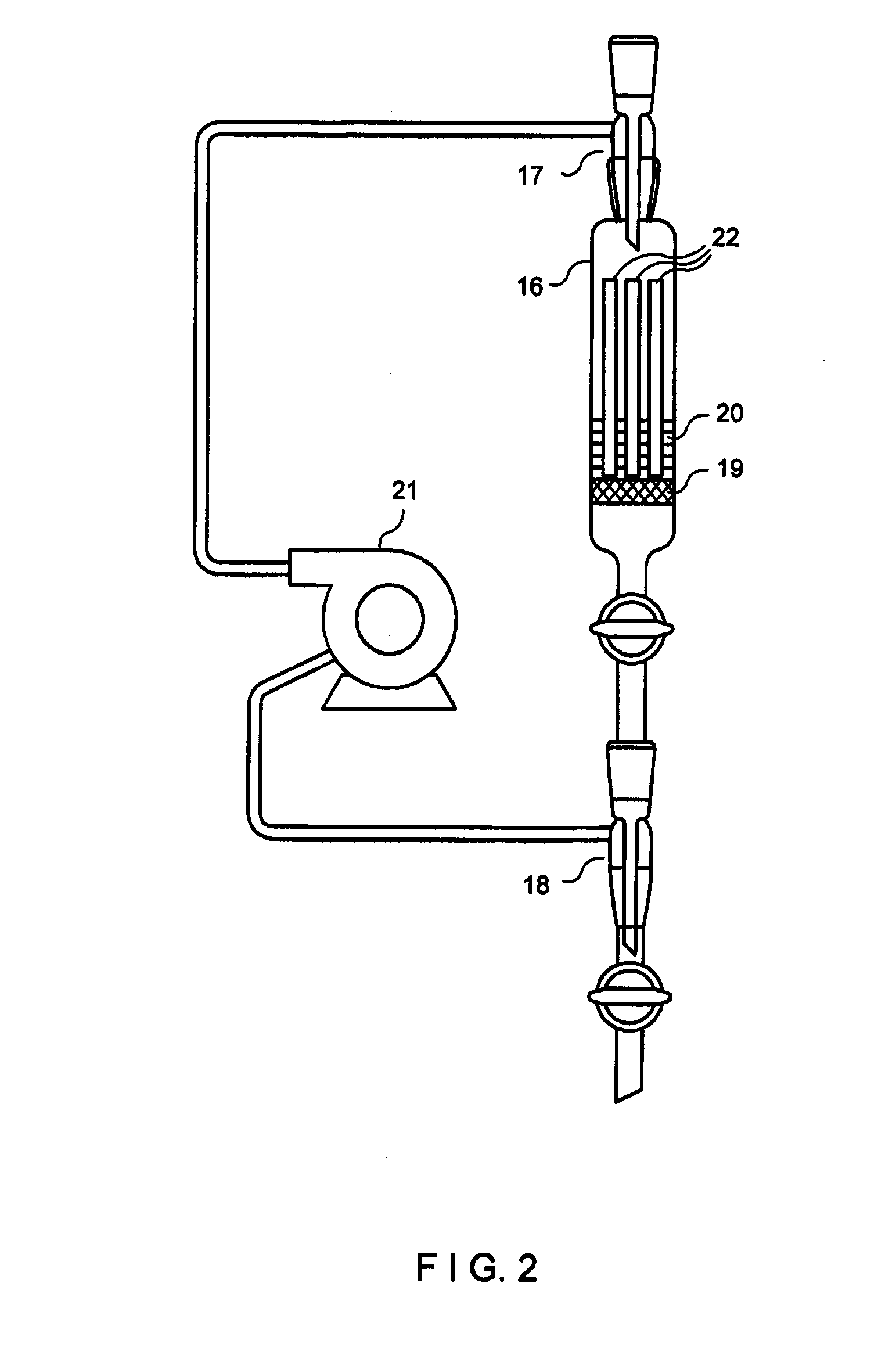Method and device for decontaminating water which contains metal and/or is radioactively contaminated
a technology for radioactive contamination and water, applied in the direction of alkali metal halides, from melt solutions, from normal temperature solutions, etc., can solve the problems of difficult or even impossible disposal of waste, and small amount of waste to be disposed of, and achieves easy disposal
- Summary
- Abstract
- Description
- Claims
- Application Information
AI Technical Summary
Benefits of technology
Problems solved by technology
Method used
Image
Examples
example 1
[0080]Initially, 1000 ml of waste water from an electroplating factory with a pH value of 9.22 and made free of the major amounts of heavy metals is made free of coarse particles by filtration over sand. The clear solution then is brought to a pH value of 5.2 using concentrated nitric acid. One gram of a bioadsorber (phosphorylated cereal milling residues) is placed in a suitably dimensioned chromatographic column and equilibrated with distilled water having a pH value of 5.2. Thereafter, the prepared waste water solution is passed over the bioadsorber to bind the cationic heavy metals copper, cadmium, nickel, lead, and zinc contained in the waste water. Chromium present in the waste water as chromate is not bound under these conditions and remains in the eluate leaving the column. The eluate is collected in a storage container, a sample is taken to determine the heavy metal concentration and brought to a pH value of 2.0 using concentrated nitric acid. The contact element is prepare...
example 2
[0082]Each time, 1000 ml of waste water from a nuclear power plant designated
[0083]TA3B02 (primary waste water; pH=7.1; pollution 1.7×104 Bq / l),
[0084]TA3B05 (contaminated water; pH=5.4; pollution 1.0×104 Bq / l), and
[0085]FE pond water (pH=5.9; pollution 5.4×104 Bq / l) was treated separately as follows:
[0086]a) Initially, the waste water samples were subjected to a membrane filtration over a commercially available nitrocellulose membrane (diameter: 30 mm, pore width: 0.15 μm) to remove coarse particles together with colloidal components from the waste water. The flow time for the TA3 waste waters was 20 minutes and for the waste water from the FE pond 4 minutes. The clear waste waters were collected and supplied to the next process step.
[0087]b) The second process step consisted in column chromatography of the pre-purified waste waters using a bioadsorber (cation exchanger based on phosphorylated cereal milling residues) to eliminate the cations. To this end, 3 g of the bioadsorber fir...
example 3
[0090]1000 ml of waste water from a nuclear power plant (contaminated water including oil and surfactants) with a pollution of 9.4×103 Bq / l was first made free of dirt particles and colloidal compounds by cross-flow filtration over a ceramic membrane. This process step and the accompanying activity decay is presented in the following Table 3 under a).
[0091]The further purification steps in this Example correspond to the process steps b) and c) of Example 2 described above. The bioadsorber described therein was used in the same amounts, and the contact element was composed as described therein. Likewise, the other process steps b) and c) were repeated until the appropriate activity values allowing discharge were achieved. In this example, the individual activities of the radionuclides present in this waste water were determined. Similarly, the activities were measured using a gamma-spectroscopic multichannel measuring station including the appropriate associated software. The individ...
PUM
| Property | Measurement | Unit |
|---|---|---|
| pore width | aaaaa | aaaaa |
| diameter | aaaaa | aaaaa |
| length | aaaaa | aaaaa |
Abstract
Description
Claims
Application Information
 Login to View More
Login to View More - R&D
- Intellectual Property
- Life Sciences
- Materials
- Tech Scout
- Unparalleled Data Quality
- Higher Quality Content
- 60% Fewer Hallucinations
Browse by: Latest US Patents, China's latest patents, Technical Efficacy Thesaurus, Application Domain, Technology Topic, Popular Technical Reports.
© 2025 PatSnap. All rights reserved.Legal|Privacy policy|Modern Slavery Act Transparency Statement|Sitemap|About US| Contact US: help@patsnap.com



